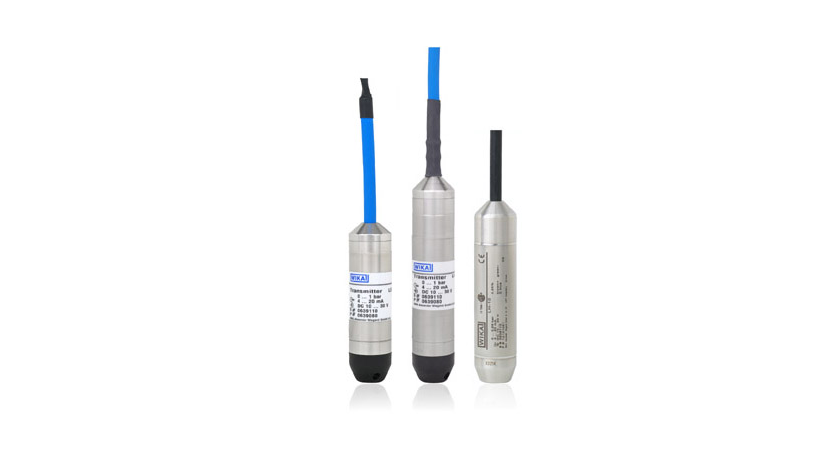
Submersible pressure transmitters as well known as level probes are intended to be used in immersion applications, thus they are immersed completely into the medium and, therefore, must withstand the properties of the media at all times.
Both in water and wastewater treatment as well as in tank monitoring, moisture may enter through the housing of the submersible pressure transmitter itself, through the cable or cable end of the transmitter if the following pieces of advice are ignored. As an operator you can prevent failures caused by entry of moisture into the pressure sensor or sensor housing only by well made product selection. For this purpose it is recommended to select a high quality submersible pressure transmitter specifically and exclusively designed and tested for the target application. The use of a “standard” pressure sensor with minor modifications, such as a cable outlet should be absolutely avoided, even though such “pseudo”-submersible pressure transmitters are frequently offered on the market.
Basically, the wise selection of transmitter housing and sensor materials that can withstand the medium is essential to prevent chemical degradation processes and corrosion. For simple use in non-critical media it is sufficient to select 316L stainless steel. In specific applications and/or critical or aggressive media, however, it is recommended to use a special submersible pressure transmitter material suitable to the medium, such as hastelloy or titantium. The risk of moisture entering the level probe through the cable forces the operator to make another difficult choice. When purchasing a submersible pressure transmitter the application medium as well as the cable’s technical specifications have to be taken into account. The operator must select appropriate cable material depending on the aggressiveness of the liquid to be measured.
PUR cables can be used for common uncritical applications, whereas a FEP cables offer the highest chemical resistance and, thus, provide process safety even under more stringent demands such as aggressive liquids. Furthermore, it is absolutely imperative to consider the measurement depth, which is related to the pressure load, particularly for typical water applications in wells and deep waters, because each cable material can ensure reliable transverse water tightness only up to the specified maximum immersion depth. As a consequence, a cable with a transverse water resistance of 10 bar means it may encounter moisture entry under pressure loads higher than the specified load of 10 bar or a 100 m water column.
The permissible tensile strain of the submersible pressure transmitter cable must not be neglected either. In applications at great depths the weight of the submersible pressure transmitter and its cable may lead to stretching of the cable and, thus, cause wear of the cable sheath. Wear of the cable sheath causes impairment of technical specifications and possible fluid permeability, thus water ingress into the level probe. Finally, any mechanical damage of the cable sheath must be avoided. Abrasion or even scoring of the level probe cable at a sharp edge as well as improper handling during installation by improper use of tools may cause the entry of moisture into the submersible pressure transmitter through the cable sheath.
Skilful cable leading using auxiliary aids such as cable strain relief clamps can reduce the tensile strain on the cable and prevent abrasion of the cable sheath. Cable strain relief clamps can be ordered as an accessory for every submersible pressure transmitter. If the level probe is used in flowing media, such as rivers, streams or tanks with agitators, it is recommended to route the cable through a protective pipe or monitoring well in order to avoid mechanical loads due to abrasion of the cable or sudden impacts by floats.
If you have any questions about selecting a product that is most suitable for your application, you can contact us.
Please find further information on this topic on our information platform “Hydrostatic level measurement”


